19th september to 24th december 2020
Pattern: the underlying arrangement used to organise a surface or structure in a consistent, regular manner. This can be by the repetition of a shape, form, colour, rule or sequence. Exploring this theme, the artists and makers in this exhibition all uniquely reference pattern in their work, whether through process, inspiration or form.
Pattern, and its repetitive, often symmetrical nature, is an integral part of everyday life. We regularly crave order and repetition, and pattern embodies this part of our visual experience. As a fundamental part of our society, it naturally provides a rich source material for artists and makers alike.
In considering the notion of pattern, this exhibition explores ideas including; geometry, mathematical sequences, dress patterns, textile design, urban planning, organisation and routine, weaving structures, digital coding and beyond.
Featuring work by Vanessa Plews, Russell Hughes, Henry Gonnet, Dominic Hopkinson, Frances Priest, Charlotte Morrison, Nicola Christoforou, Nicky Cash, Jenny Haynes Pappersaxsten, Nick James Furniture, Dalia James, Jacqueline James, Caron Penney and Millie Rothera.
Conversations with the artists
Thanks to funding from Leeds Inspired, we recorded digital conversations with some of the Potential of Pattern Artists.
The Artists
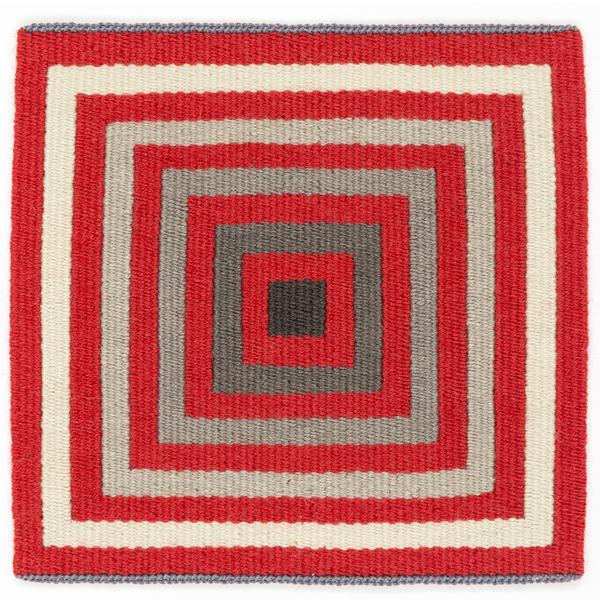
Caron Penney
Caron Penney is a British artist-weaver, known for her monochromatic palette of woollen threads interspersed with flashes of gold & red. She seeks both a political agenda and to create harmony and balance within her finely woven tapestries and often explores repetitive pattern to exploit this. Penney’s practise has evolved around a central theme of Manhattan and responds to the ebb and flow of the daily migration across the City. The work draws comparisons between societies need to function and the individuals need for identity and their subtle co-existence. These finely woven textiles explore duality such as lightness and heaviness and illusion and reality. Her work hovers between the abstract and the figurative, creating a window into a world which is both mysterious and familiar.
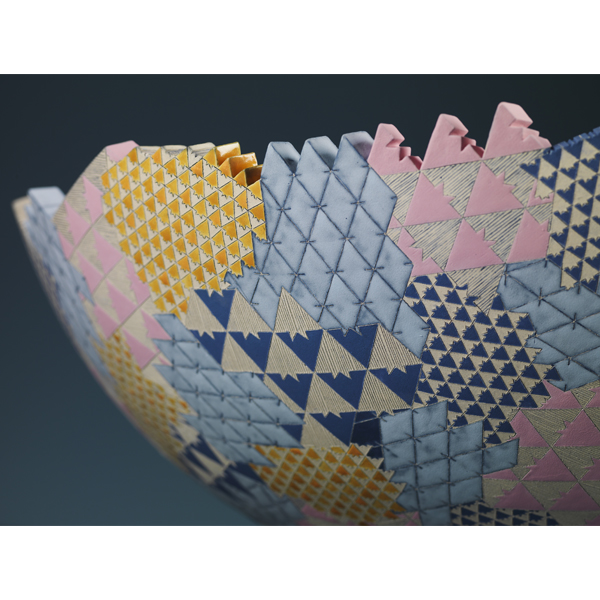
Frances Priest
Frances' current practice explores cultural histories of ornament and decoration through the creation of ornately drawn and intricately coloured ceramic objects. Central to the work is an interest in pattern books as a means of documenting and disseminating languages of ornament. The work she makes reflects upon the ever-changing interpretations of ornamental motifs as they move between drawing and material form. She graduated from Edinburgh College of Art in 1999. Since then she has built a recognised studio practice in ceramics with work represented in public collections including The National Museum of Scotland, The Fitzwilliam Museum and The Victoria & Albert Museum.
Frances's studio activity is complemented by sited projects which use languages of ornament to explore interwoven elements of place and community. Projects have taken the form of residencies, design commissions and permanently sited installations, examples include ‘The Tiled Corridor’ for The Royal Edinburgh Hospital, 2018 and ‘Patterns of Flora | Mapping Seven Raasay Habitats' for Atlas Arts., 2015.”
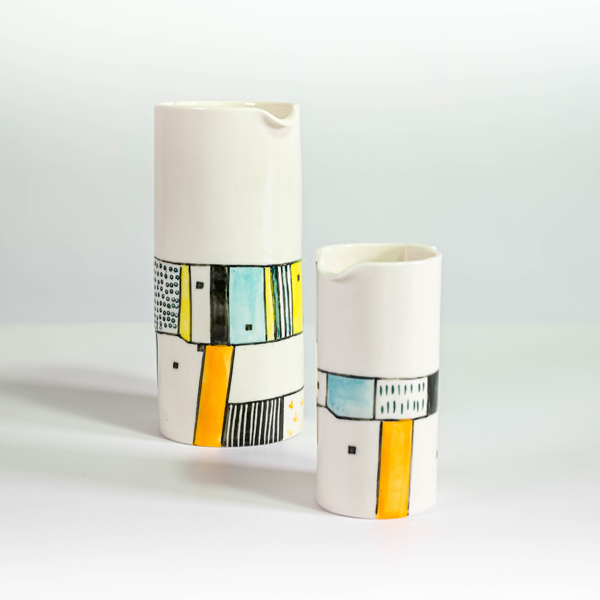
Charlotte Morrison
Charlotte's inspiration for her work, comes from items she collects, nature & the landscape around us. Charlotte is a keen walker & gardener & wants to transfer what she sees & collects from these experiences, into imagery & pattern to decorate her ceramics. Currently her work has two focus points; her ‘Map & Field Collections’ - which her ceramics, through form & symbolic inspired decoration, echo ancient roads, places & the surrounding Yorkshire landscape, and her most recent work, ‘Natural Specimen’ - reflecting collected object from walks & natural specimens.
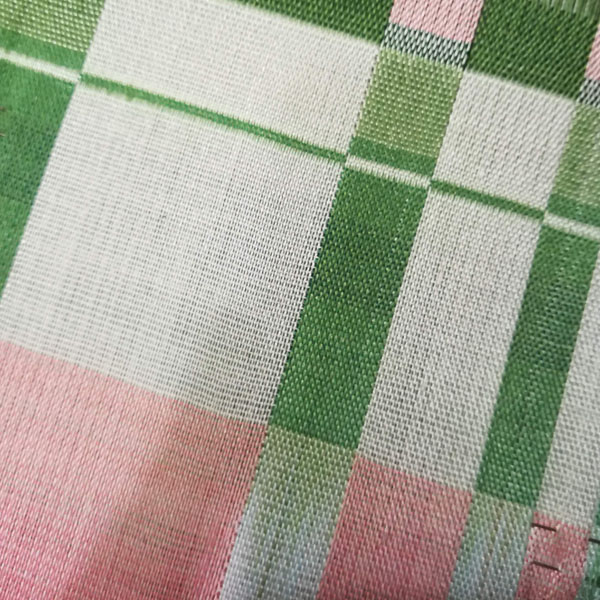
Dalia James
Dalia James is a London based woven textile designer and hand-weaver (b. 1987). She graduated from Loughborough University with a degree in Woven Textiles in 2012. Dalia often references early 20th Century design and artistic movements and philosophies in her work, and uses simple geometric forms to explore how colours interact with each other resulting in bold, playful contemporary designs and artworks. With a background in Arts administration, in 2018 Dalia decided to focus more of her time on her own practice. She was selected for the Crafts Council Hothouse programme in 2019 and showcased her work at New Designers: One Year In in June of that year, during which she was mentioned in an article in the Evening Standard titled ‘Styling Our Future’ about emerging makers and the resurgence of weaving.
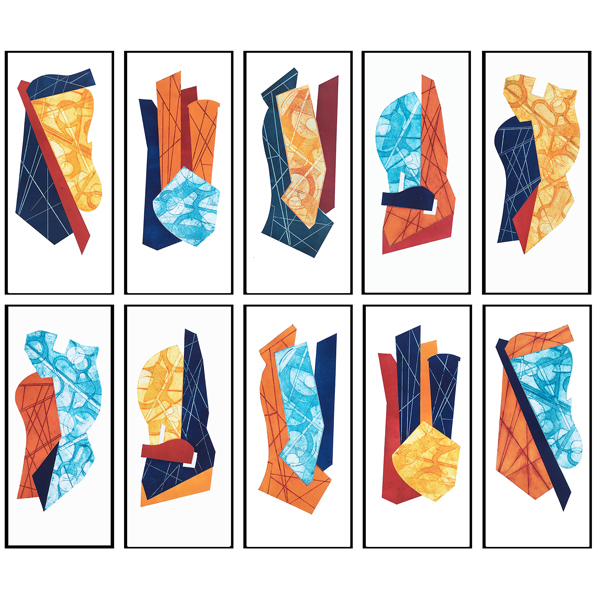
Russell Hughes
Russell Hughes is an artist and printmaker based near York.
His work is inspired by the spaces we find all around us – their visual characteristics, our experience of them, and what they tell us about the societies in which we live. Projects are often developed by creating small datasets, based for example on walking or measurement. Russell works in both printmaking and 3D using ready-made objects and non-traditional materials.
Russell’s current work explores spatial connections between our daily lives and global issues such as Climate Change.
Spaces such as road networks, car showrooms, petrol stations are local, every day, familiar spaces but are also strong signifiers of fossil fuel addiction and hence of climate change. These spaces are also architecturally and visually very distinct.

Dominic Hopkinson
Mining the vast pool of ideas within mathematics, physics and molecular biology Dominic Hopkinson generates sculptures in stone, plaster and bronze, attempting to distil these complex concepts into pure visual form. The sculptures question how our world appears so familiar at different scales and invites the audience to impose their own reading of scale upon the work. His work explores the nature of form and philosophy, playing with ideas of scale, tone and shadow, to talk of a universal mathematical structure that influences and guides our world experience at many levels. Much of his sculpture is informed by Buckminster-Fuller's closest packing theories and what Marcel Duchamp called the "infra-slim", the tiny, almost non-existent space between the cast object and the mould. Equally important is the relationship of the Platonic solids and the Golden Section (the irrational number 1.6180339887...) to the growth patterns within living organisms.
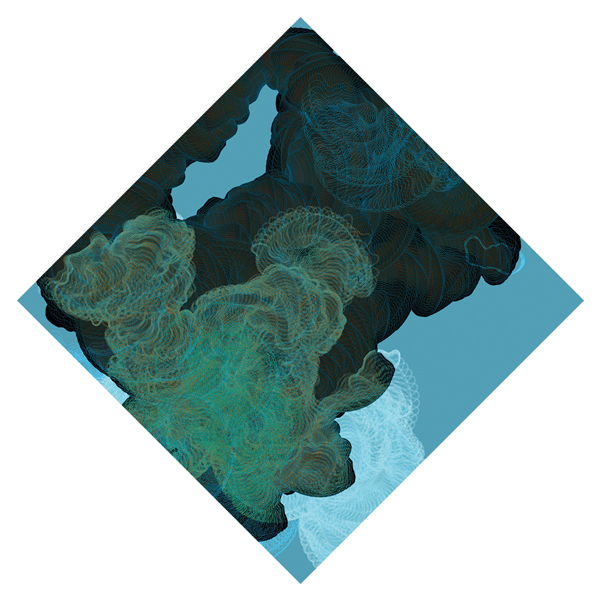
Henry Gonnet
Henry's artworks are an exploration of binary ideas; seated at the intersection of the physical and digital worlds, navigating the space between chance and control. Through a creative coding process he refers to as "generative score writing", he builds systems that play with cause and effect. Gonnet's practice encompasses generative computer art, drawing, sound, installation, and performance.
Read Henry's interview on our blog!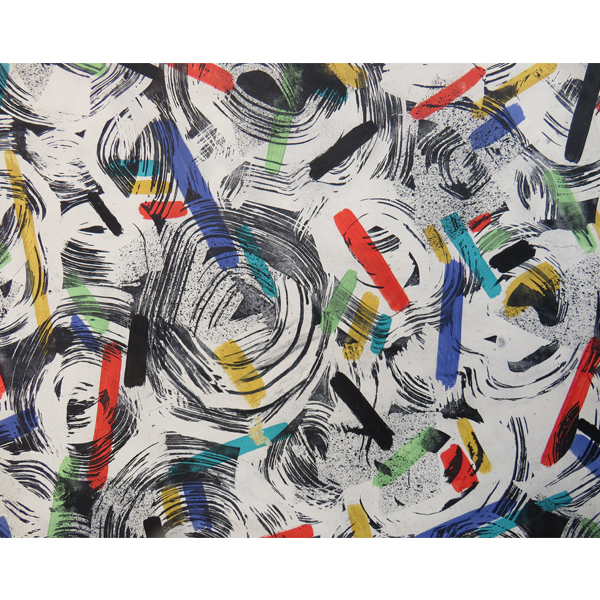
Vanessa Plews
Vanessa Plews is an artist and textile designer working both from home and from her studio at Cornmill Art Space in Ilkley. She graduated from Camberwell School of Arts and Crafts with a BA Honours degree in Printed Textile Design. During the late 1970s and throughout the 1980s , she worked with a number of companies in both design and sales. She then went on to co-found her own London based company Designline Ltd. comprising of two partners and freelance designers, working as a team to create a variety of print design collections specifically for fashion textiles. Vanessa travelled extensively in Europe, USA and the Far East, representing the studio and selling their work to fabric converters, the printed textile manufacturers.

Jenny Haynes
A Swedish exile having spent the previous 18 years in London and Sheffield, Jenny Haynes (née Nilsson) studied Pattern Cutting and Tailoring in her native Stockholm. Soon after, she followed her passion for fabrics and moved to London to study Fashion and Textiles at the London College of Fashion. She went on to develop her own label ‘Papper, Sax, Sten’ (that’s ‘Paper, Scissors, Stone’ in case you’re wondering!), creating award winning designs that reflect her many different influences.
Her bespoke quilts and furnishings are recognised for their clean and simple, mid-century modern design. Jenny mixes rich colours with pastels and is not scared of a colour clash, often using her trademark curves together with solid fabrics, while remaining faithful to her Scandi’ roots. This was recognised in Summer ’15 when Jenny was invited by the Swedish Chamber of Commerce, along with 18 other Swedish designers, to be a part of Heal’s Swedish Summer Exhibition. Heal’s have a long history of promoting Swedish design with exhibitions in 1923, ’51 and ’71.
In 2117 Jenny was asked to contribute to a publication by Thames & Hudson for the V&A. Two of Jenny’s quilts are featured in Patchwork & Quilting: A Maker’s Guide, ‘Designed by teachers and practitioners at the leading edge of today’s craft revival, the projects are both functional and fashionable’.
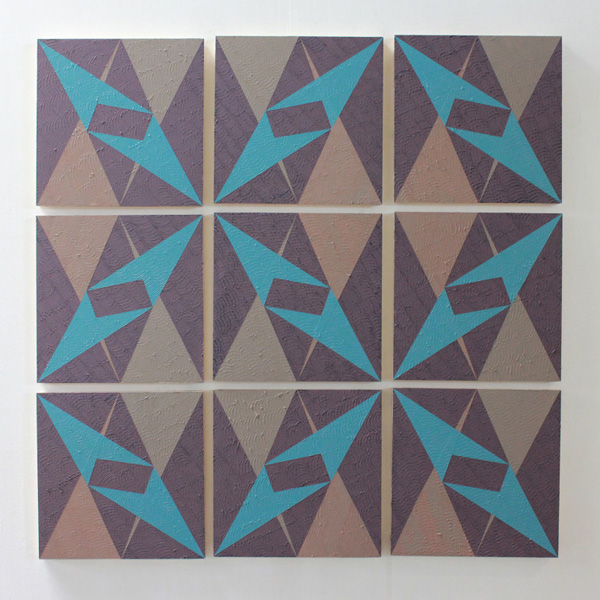
Nicola Christoforou
Influenced by 60s Op Art, Nicola's practice revolves around four main elements of interest: line, colour, form and layers. By combining these components she aims to create a flip between the two and three dimensional within a flat surface. The use of balance, repetition and symmetry within her work enables her to create mathematical compositions and systems. The colour palettes in Nicola's paintings specifically consist of muted tones layered above one another; these are scraped into using a tool to reveal the paint below.
Geometric forms used within design have functions (patterns found in architecture, envelope interiors, material on bus seats ect) and often reference geometric art from the Sixties, validating that aspects of Op Art still exist within the present day and are imperatively operated within design. This is important for Nicola's practice as elements of it relates to work from this period and show it has a purpose within today’s society.
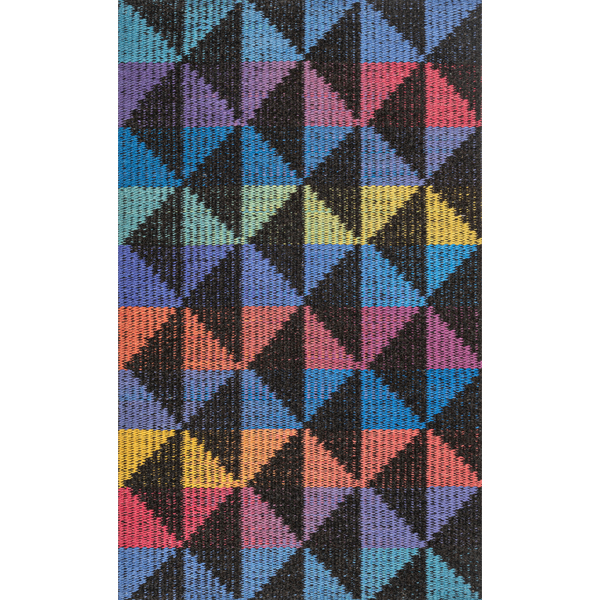
Jacqueline James
As an established, award winning textile artist, Jacqueline James creates exclusive, hand woven rugs and wall panels for distinctive interiors. She blends traditional rug weaving techniques with contemporary design style to create luxurious and functional textiles for public and private collections.
Each unique piece is made with natural, sustainable, soft and durable materials including wool, cotton and linen. She uses a variety of new and heritage rug weaving techniques, including ‘shaft switching’ invented and shared by Master Weaver Peter Collingwood OBE (1922 – 2008).
Jacqueline specialises in collaborating with private collectors, interior designers and architects to create bespoke commissions. Her work is in many public and private collections in the UK and internationally. Major public commissions include weaving for Westminster Abbey, York Minster and the British Library.
She has exhibited her work in many quality galleries and design fairs throughout the UK. In 2018 Jacqueline was commissioned to make two rugs, designed by artist Giles Round, for an installation at Hepworth Wakefield. Last year during London Craft Week she exhibited in ‘The Future of Craft’ with selected members of Design Nation and had a Textile Gallery ‘Colour & Weave’ at the Knitting and Stitching Shows in London and Harrogate. Her work experience also includes public speaking, mentoring, and facilitating textile related workshops in schools, museums and galleries.
Pleasing colour combinations, striking geometric patterns and smooth gradients are all distinctive elements of her woven designs. With great passion and discernment for colour Jacqueline uses a broad range of dyed yarns and carefully blends several strands together, like mixing paint, to achieve the desired hue. To create interesting surface patterns, she regularly custom dyes the designer yarns before the weaving process.

Nick James
Nick is an award-winning furniture maker who has been running his own business for more than 15 years. A designer and maker at heart, he has a strong passion for traditional woodworking techniques that are rare in contemporary practice. Nick designs and creates fine wooden products from start to finish, manufactured to a high standard right here in the UK. With the help of his team of skilled craftsmen, Nick transforms traditional, natural materials into uniquely designed, collectable pieces that perfectly capture elegance through simplicity and solidity.
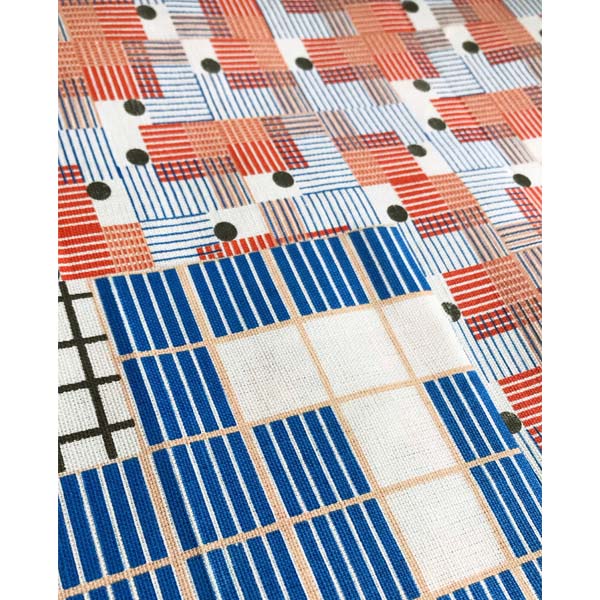
Millie Rothera
Millie Rother is a textile designer based in Yorkshire. Throughout all her designs, whether they are inspired by modernist architecture, the idea of play within the home, or nature; her work is always colour focused and made to the highest quality using natural fabrics and either hand screen printing techniques or eco friendly digital printing. Millie's products and fabrics are created with a story to tell, hand crafted and passionately produced, all within Yorkshire.

Nicky Cash
Done up North is an Award winning Furniture Upcycling business creating bespoke and distinctive furniture from tired vintage pieces, specialising in with unique geometric designs and luxe style makeovers. Nicky Cash is the designer behind Done up North making statement pieces for sale and for commission projects for clients across the country. She particularly loves creating Art Deco and Mid Century style Modern pieces.
She works largely on a commission basis directly with clients and Interior Designers to create completely unique pieces to suit their décor.


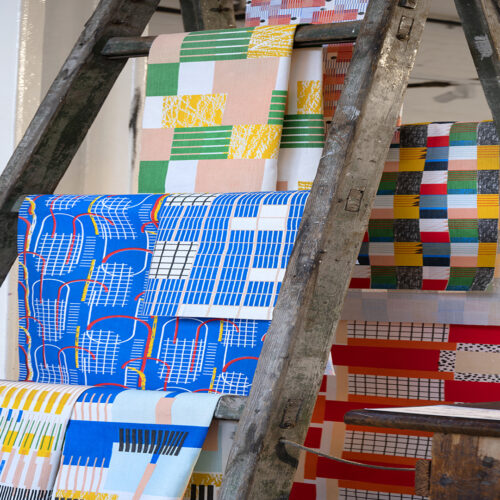
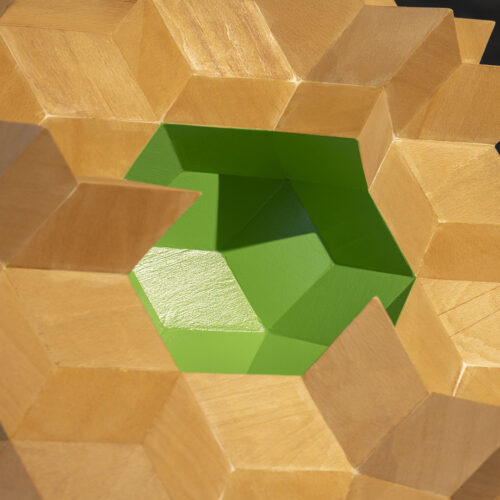
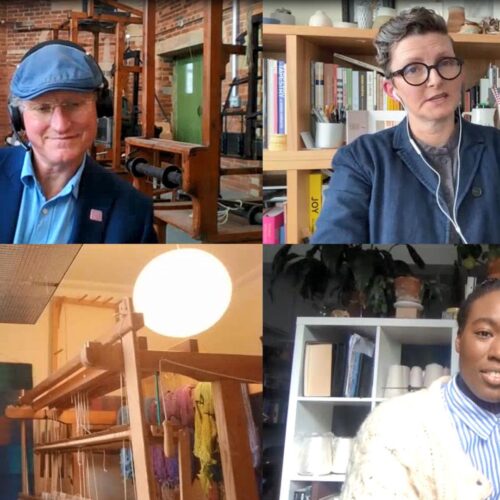
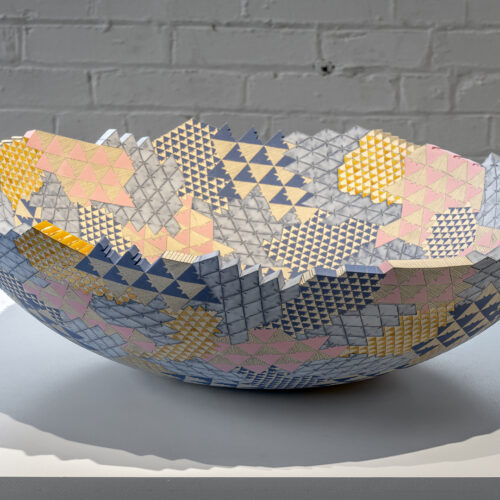
![We celebrated International Women's Day in style last night with a sold out Sofar Sounds gig in the Gallery!
We heard sets from Katie Malco, Satnam Galsian & Philippa Zawe amongst the artwork of our 2024 Ones to Watch artists. 10/10 experience.
Sofar Sounds run secret intimate gigs across the UK. See their website for upcoming shows - we would highly recommend.
The Gallery is open as mnormal this weekend, so come along and see Ones to Watch for yourself. 10-4 Saturday & 12-4 on Sunday FREE ENTRY.
[Image 1 shows host Bonnie introducing the night to a seated crowd in the middle of the exhibition space in the Gallery. Image 2 shows musicians Phillipa and Satnam smiling together in front of a large painted tapestry by Kennedy Drake. The banner features a statuesque female figure with her arms in the air. Image 3 shows Katie performing to a smiling crowd playing an electric guitar. Image 4 shows Satnam perfoming into a microphone in the Gallery. Image 5 shows Phillipa performing to the crowd playing an acoustic guitar, illuminated by yellow fairy lights.]
#SunnyBankMills #Farsley #Leeds #SofarSounds #InternationalWomensDay](https://www.sunnybankmills.co.uk/wp-content/plugins/instagram-feed/img/placeholder.png)